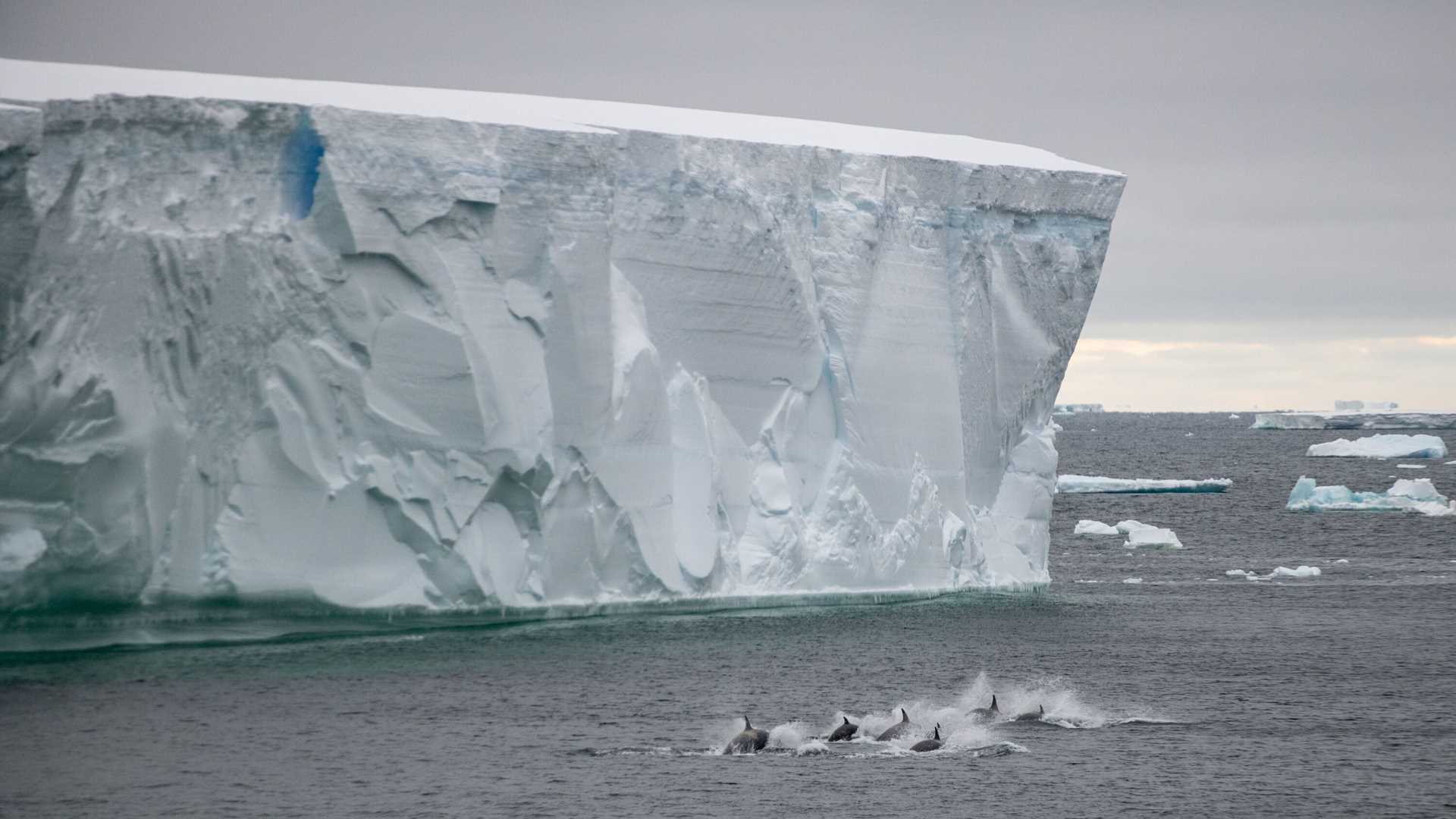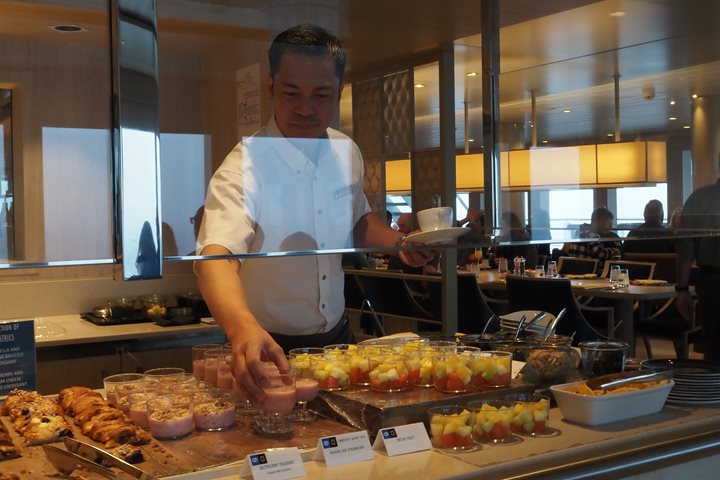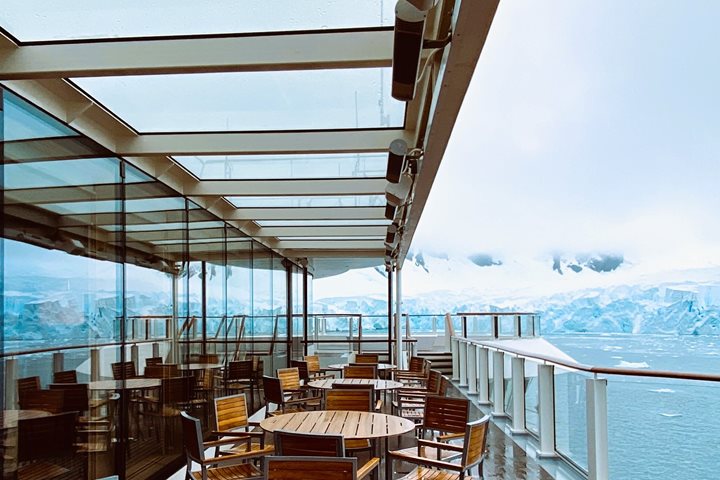The Ross Sea seems to have an endless supply of killer whales. We have had multiple days now with more than one encounter with type C, Ross Sea killer whales. We were awoken early by another group with about 150 animals, including males, females, “sprouters,” and calves in every direction. These killer whales are thought to only exist in or near the Ross Sea. They have a smaller form and a narrow, somewhat slanted eye patch. It is thought that these whales rely mostly on fish. Watching them move through the ice in unison is breathtaking.
We made it across the Ross Ice Shelf and arrived at Cape Colbeck in West Antarctica. Today we explored Bartlett Inlet, an inset cove surrounded by ice. At the very back of the bay, perched high above the waterline, we found several Adelie and emperor penguins. In one area, we observed what must have been a hundred or more emperors sitting on top of the ice or swimming in the water. These “emps” slid on their bellies and launched into the water. They spent some time cleaning and then jettisoned themselves out of the water and back up on the ice, landing with a thud. Some did not sufficiently plan their exit or get up enough speed to clear the highest lip. These penguins ricocheted off the face of the ice and fell back into the water. It was like watching penguins at a water park. They came down the slide into the water, jumped back out of the water, and then got back in the queue to do it all again. Clearly, I am anthropomorphizing, but this is an accurate analogy for the behavior we witnessed today.
Upon leaving Bartlett Inlet, we ran into Ross Sea killer whales again. Perhaps it was the same group from this morning, perhaps it wasn’t. They swam through brash and pack ice against a backdrop of massive icebergs and low, soft light. Every day of this journey has been magical.









